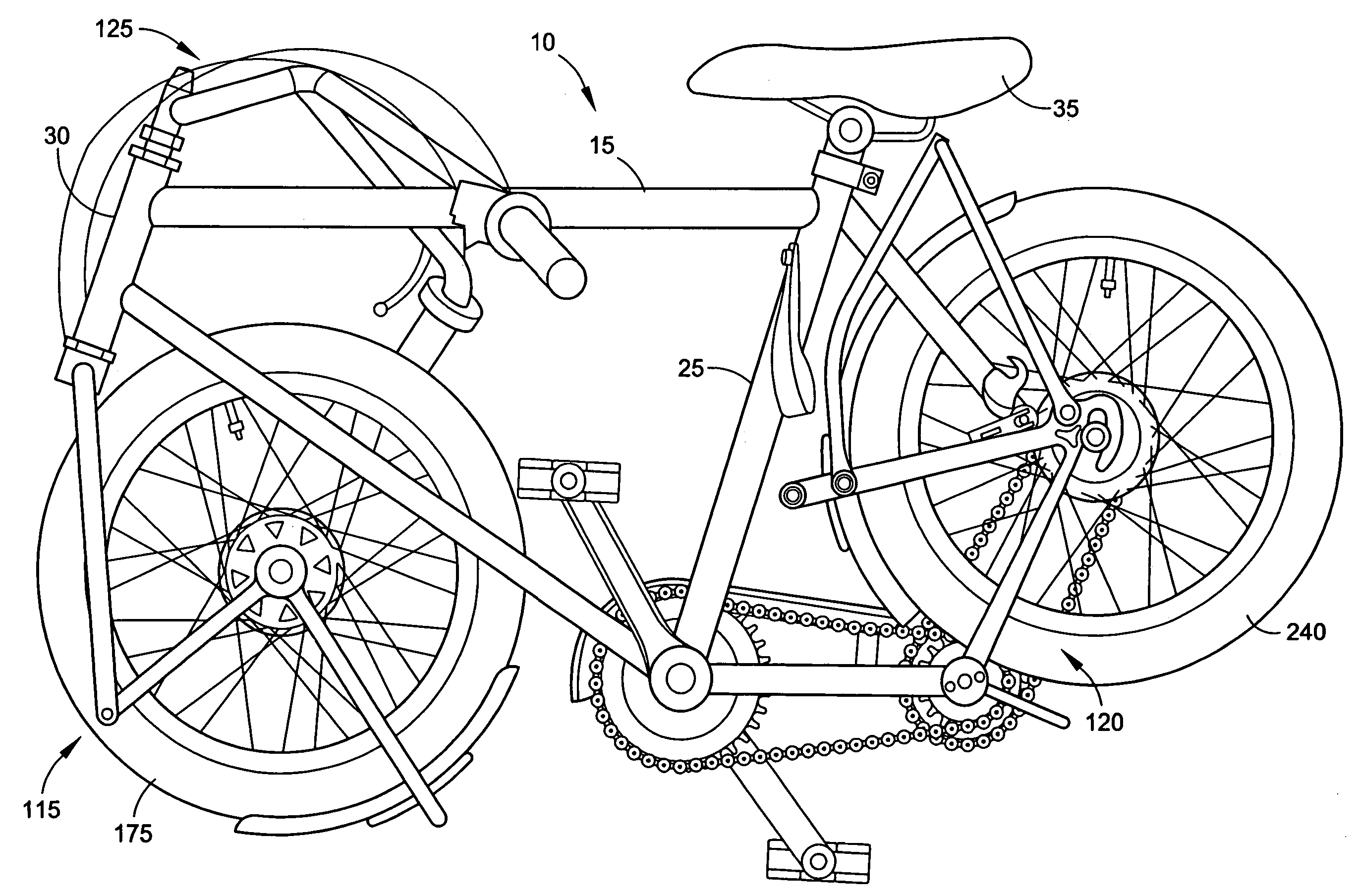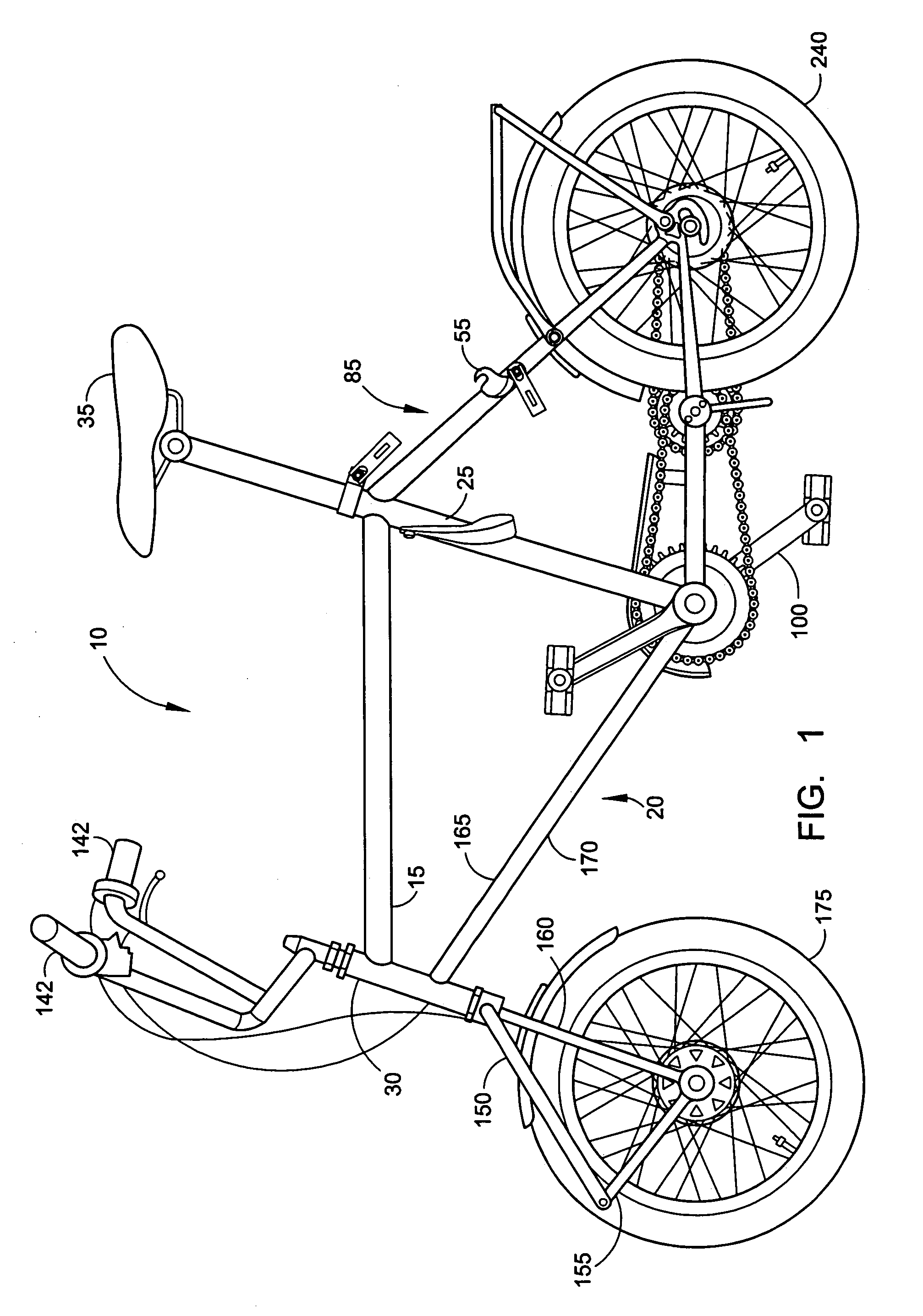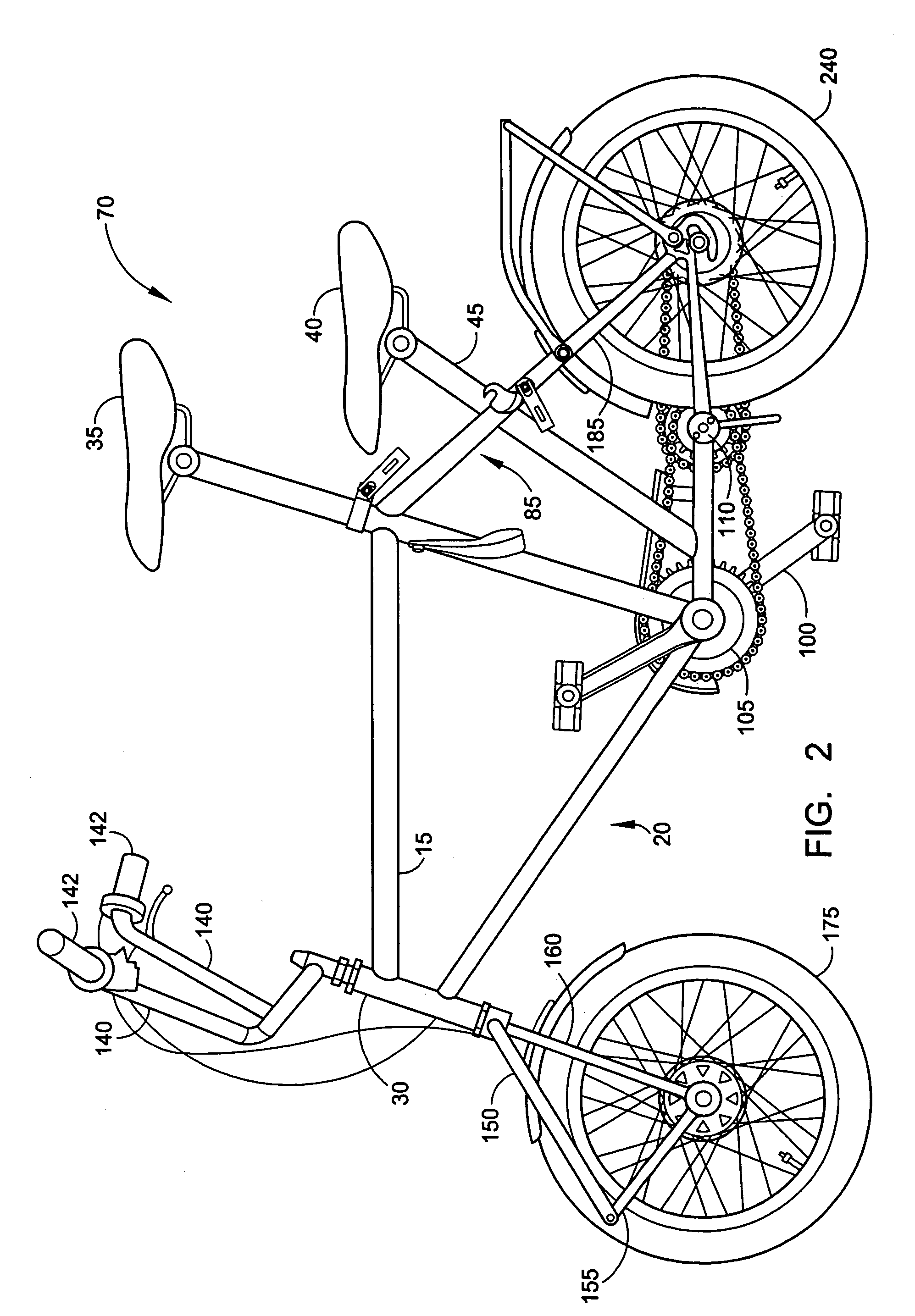[0008]The present invention alleviates to a great extent the disadvantages of known folding bicycles, some of which are discussed above, by providing a bicycle that is foldable into a compact size, while still having a central frame without any folding joints. The foldable bicycle of the present invention, preferably is foldable while generally providing a riding experience and durability of a standard non-folding bicycle.
[0009]One embodiment of the present invention includes a central frame assembly of a down tube, a seat tube, a top tube and a bearing tube, wherein the down tube, seat tube, top tube and bearing tube are substantially fixed relative to each other. This arrangement can promote ergonomic riding characteristics of a non-folding bicycle.
[0010]The foldable elements of present invention optionally include a foldable front fork assembly, a foldable rear-wheel assembly and a foldable handlebar assembly. Although each of these assemblies are optional features of the present invention, they operate together to reduce the folded size of the foldable bicycle, rendering it for example more easily transportable. The optional front-fork assembly mounts the front wheel on its lower end, and is jointed at or near a connector strut. In operation, the front fork assembly includes linking bars connecting the upper end at the frame with the wheel, at its axle. The joint can be operated to unlock and allow the front fork assembly to rotate about the joint, in the direction of the down tube assembly of the frame. The down tube of the frame preferably has two spatially separated portions spaced apart from one another. So, when the front fork assembly is rotated about the joint, the wheel can fold into the area between the separated portions, thereby rotating into the center of the frame, through the two spaced apart portions of the down tube. Alternatively, the wheel and front fork assembly can be rotated 180° prior to being folded about the joint.
[0011]The optional handlebar assembly also serves to reduce the folded dimension of the foldable bicycle. In particular, the handlebars are mounted to a tube in a locked, but unlockable fashion. When it is desired to fold the bicycle, the handlebars are unlocked, and rotated downwards, preferably to a position that is within the area of the central portion of the frame. In a preferred embodiment, the handlebars are fully turned 180°prior to folding, and the handlebars are then unlocked and rotated downwards to a position in which one handle grip is on the left side of the central portion of the frame, and another handle grip is on the right side of the central portion of the frame. Then, using a lockable joint, the respective handlebars can be folded inwards towards each other, and can be folded inwards a sufficient amount so that the handle grips cross one another.
[0012]The optional rear wheel assembly also serves to further reduce the folded dimension of the foldable bicycle. In this embodiment, a strut assembly descends at an angle from beneath the seat to the rear wheel axle. Preferably the strut assembly includes spatially separated, or parallel, bars, between which the rear wheel is mounted. At a location between the seat and the rear wheel axle, the strut assembly includes a locking assembly. When the locking assembly is released, the rear wheel rotates upwards, between the spatially separated bars of the strut assembly. In a preferred embodiment, the compactness of this arrangement can be enhanced by using dual transmission chains, with an intermediate sprocket. The chain stays, together with the rear wheel, are foldable upwards toward the seat. To facilitate the folding of the chain stays and the rear wheel, the transmission from the chainring to the sprocket is complemented by two sprockets and a shaft, i.e. consists two chains in series, which results in an additional transmission ratio. The shaft also serves as a pivot, around which the chain stays and the rear wheel fold. The front chain remains between the front chainring and the intermediate sprocket, on the shaft, while the rear chain remains between the intermediate sprocket and the rear sprocket, and shifts upwards together with the chain stays and the rear wheel without changing the distance between the front sprocket and the rear sprocket. In this embodiment, the rear wheel is rotated about the intermediate sprocket when folding the wheel upwards. The chain stays, together with the rear wheel, is foldable upwards toward the seat. In riding position, power is transmitted via a chain from a pedal sprocket to the intermediate sprocket and then via a second chain from the intermediate sprocket to a rear wheel sprocket mounted at the rear wheel axle. If the rear wheel is removed, the length of the bicycle can be further reduced in the folded position.
[0013]To reduce the width of the folded bicycle, the pedals can also be folded.
 Login to View More
Login to View More  Login to View More
Login to View More 


